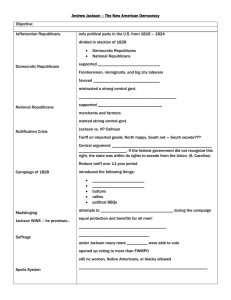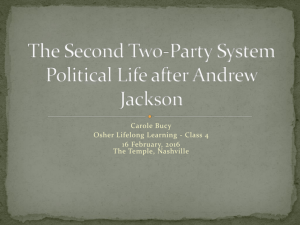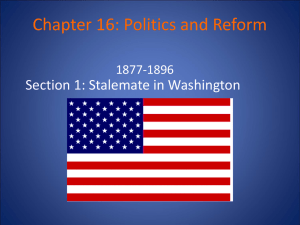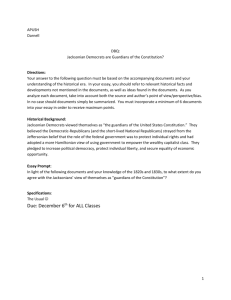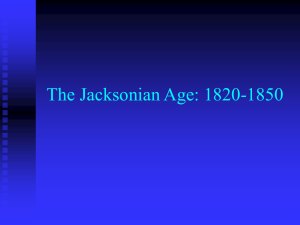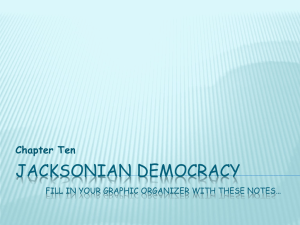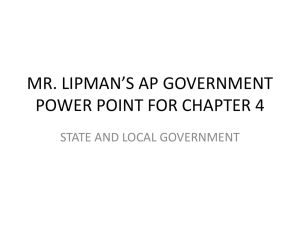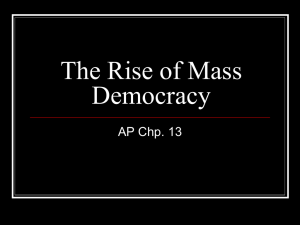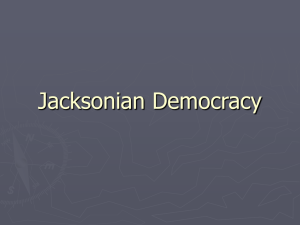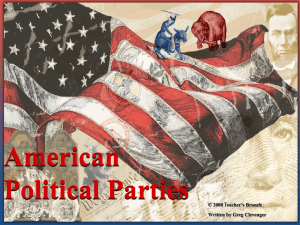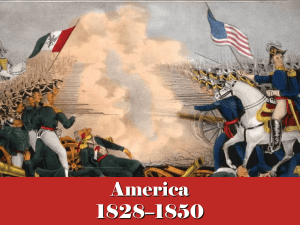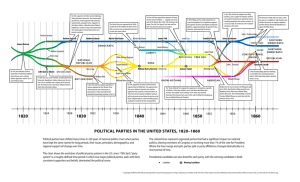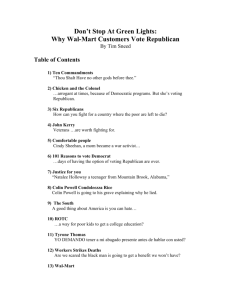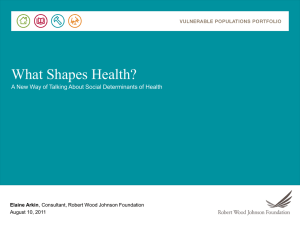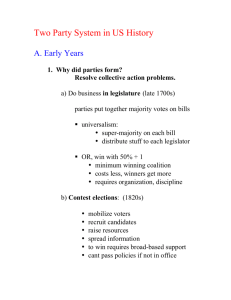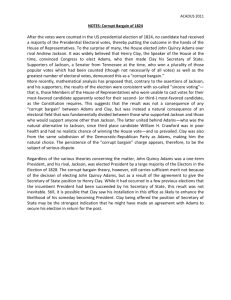The Rise of Andrew Jackson
advertisement
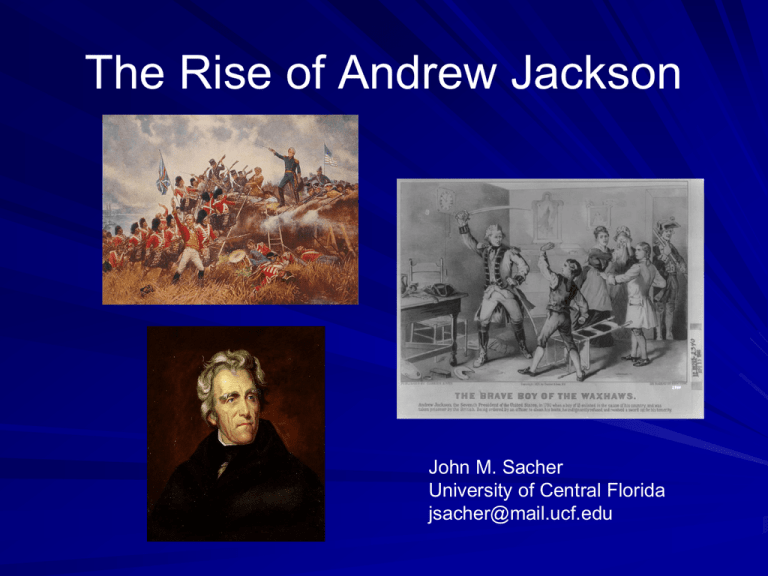
The Rise of Andrew Jackson John M. Sacher University of Central Florida jsacher@mail.ucf.edu Political Parties Federalists and Republicans 1790s-1815 Republicans 1815-1820s Republicans divide into: – National Republicans – Democrats/Jacksonians/Jacksonian Democrats National Republicans Henry Clay John Quincy Adams American System Martin Van Buren Coffin Handbill Jackson’s Marriage Electoral Votes—1828 1828 Election is “Between J.Q. Adams, who can write. And Andy Jackson, who can fight.” Jacksonian Democracy (The Age of the Common Man) 1. Increased opportunity to be involved in politics 2. Rotation in office; Spoils System; Reform 3. The President and the people Jackson’s Inauguration Democratic Ideology 1. President is the representative of the people. 2. States’ Rights/Strict Construction/Small government (negative liberal state). 3. Do not welcome economic and social change (or at least don’t believe government should aid this change.) 4. People vs. Aristocracy, Moral view of society. Jackson’s Bank War 1832 Presidential Election 1832 Popular Vote Candidates Andrew Jackson 687,502 (55.0%) Henry Clay 530,189 (42.4%) John Floyd 33,108 (2.6%) William Wirt 100,000 (?) Assassination Attempt Whig comment: It is appropriate “that the chief who violated the Constitution, proscribed public virtue, and introduced high-handed corruption into public affairs and debauchery into private circles” should have been a victim of such an attempt Political Party Math Whigs= National Republicans + Antimasons + Disgruntled Democrats Nullification Enforcing the Tariff 1833 Tariff “Our Federal Union, It Must be Preserved.” Antimasonic Party William Wirt They found “a good enough Morgan until after the election.” King Andrew I We are the midst of a revolution hitherto bloodless but rapidly tending towards a total change of the pure republican character of the government and to the concentration of all power in the hands of one man.” Henry Clay Executive Usurpation Whig Ideas 1. Congress represents the people. 2. A strong federal government and a broad reading of the Constitution (positive liberal state.) 3. Welcome & encourage economic and social change. 4. Organic view of society; cooperation not conflict.
